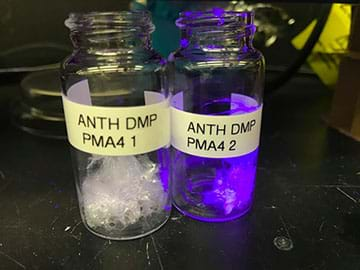Materials List:
Exploring the Integumentary Systems of Animals
 https://www.teachengineering.org/activities/view/usm-2292-exploring-integumentary-systems-animals-research
https://www.teachengineering.org/activities/view/usm-2292-exploring-integumentary-systems-animals-research
For Motivation/Introduction Activity:
Each group will need:
- various types of sunscreen; one different type per group (for example: sprays, lotions, organic sunscreen, inorganic metallic sunscreen, zinc, etc.)
To share with the entire class:
- a computer to show the Teacher Guided Presentation Part 1: UV Light and Teacher Guided Presentation Part 2: Integumentary System on PowerPoint
For the Main Activity:
Each group will need:
- Sample Procedures worksheet; three copies per student
- Control Lab Procedures worksheet; two copies per student
- Testing Apparatus Construction presentation and Data Collection worksheet; one copy per group
- Conclusion Poster Layout worksheet, one copy per group
- hot plate
- 1000 ml beaker
- two 250 ml beakers (students will use one while the other cools following use on the hot plate)
- 100 ml graduated cylinder
- two 10 ml graduated cylinders (one for measuring vinegar; one for measuring glycerin)
- permanent marker
- silicon spatula, available on Amazon and in other stores
- timer (students may use smartphones)
- electronic balance
- metal spatula (one large enough to measure 10 g of corn starch and other for measuring 0.6 g of glowing powder)
- weighing paper (used in chemistry classrooms)
- weighing boat (used in chemistry classrooms)
- five petri dishes
- ~60 g corn starch
- ~30 ml vinegar
- ~30 ml glycerin
- ~300 ml distilled water (tap water will work for this activity)
- ~3 g red phosphorescent (daytime white-glow) powder, available online
- pipettes (one for vinegar, one for glycerin)
- additional materials needed for different groups; note: all of these items can be purchased in department store craft section, craft store, or online:
- group 1: feathers, ~10 cm in length
- group 2: chocolate protein powder or coffee grounds, ~30 g
- group 3: yellow food coloring, 1 vial
- group 4: acrylic nails, 50 count bag
- group 5: brown plastic lacing thread
- group 6: green glitter, 100 g jar
- group 7: see Student Sample Examples and Cuticle Procedures
To construct the quantitative testing apparatus; each group will need:
- two ring stands
- two clamps (that will fit a ring stand)
- 1 cardboard box (approximate measure: 29.8 cm x 20.3 cm x 12 cm)
- masking tape
- box cutter
- UV flashlight, available online
- light sensor probe (can be purchased at Vernier; or check with your school’s science department)
- LabQuest Interface or Lab Quest Mini (can be purchased at Vernier; or check with your school’s science department)
- 25 – 50 g bottle of black acrylic paint
For evaluation of the activity, each group will need:
- large dry erase board (60 cm x 80 cm) or poster board
- dry erase markers or regular markers
- meter sticks

 https://www.teachengineering.org/activities/view/usm-2292-exploring-integumentary-systems-animals-research
https://www.teachengineering.org/activities/view/usm-2292-exploring-integumentary-systems-animals-research